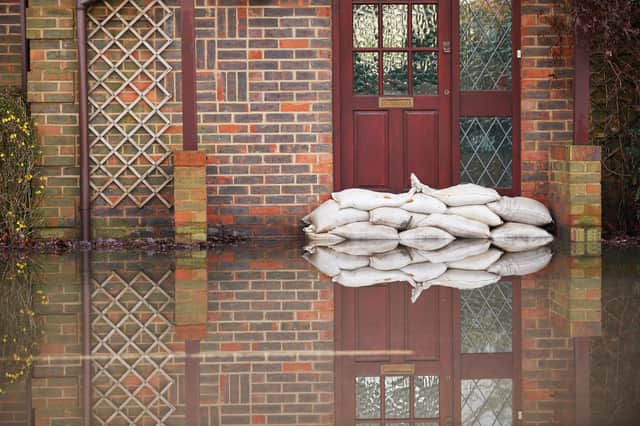Going Green: Homes built on flood plain impossible to insure


Over the last 10 years, floodplain development has gone up 12 per cent. When you add in the fact that one in six homes in the UK is already at risk of flooding from rivers, sea and surface water and the fact climate change is increasing flooding events, it all makes for a pretty grim picture.
A flood plain is essentially land which would naturally flood with a yearly probability of one in 20 or greater.
Advertisement
Hide AdAdvertisement
Hide AdUnfortunately for buyers, floodplain land is some of the cheapest that can be bought in the UK which means developers can make a greater profit margin.
It gets worse though as the vulnerable homes built in areas that can and will likely flood are usually built using traditional construction methods which don’t account for flooding. Finding insurance when your home is built on a flood plain is either impossible or so incredibly expensive very few homeowners can afford it alongside mortgages.
A staggering 2.4 million buildings stand in flood plains, that’s a lot of homes, businesses, schools and damage to the UK economy if and when these areas flood. The top six highest risk areas for flooding are South Holland, Boston, Fenland, Runnymede and King’s Lynn and West Norfolk.
Floods cause an estimated £1.1 billion of damages per year in England so the threat and risk of having a home on a flood plain is very real, but there’s also the risk from rivers and waterways.
Advertisement
Hide AdAdvertisement
Hide AdRivers traditionally are banked by meadows – the root systems that make up grasses and meadows are really good at not only absorbing some of the overflow from rivers but they also give a space for overflow water to sit until it’s absorbed back by the land.
When houses are built on that valuable resource, the water has to go somewhere and it results in faster running rivers and streams which increases flood risk to houses downstream of the new development and erodes land at a much more rapid pace.
Moving house ranks in the top five in plenty of surveys about the most stressful life events people can experience but it’s vital – even during the stress of dealing with solicitors, estate agents and onward chains that buyers pay heed to the risk of flooding when they’re looking at a new home.If the risk is substantial, insurers won’t touch you and considering the average pay out from an insurance company post flooding is around £32,000, that’s a lot of money to find yourself if you haven’t been able to get insurance.